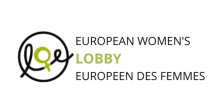EU countries in the dark on human trafficking, according to leading EU news portal

[EUobserver, Brussels, 24 September 2012] Member states lack reliable data to fully evaluate the scale of human trafficking in the EU the European Commission said on Monday (24 September).
Member state statistics on human trafficking are sometimes unreliable, says the European Commission (Photo: Hans Op De Beeck)
"We have so few figures and so few reliable statistics that it is difficult to make an evaluation to see if there is a significant increase or a decrease, we can’t really tell because it is such a black and grey sector," noted EU home affairs commissioner Cecilia Malmstrom.
A conservative estimate by the International Labour Organisation put the number of people trafficked worldwide to be some 20.9 million between 2002 to 2011. The UN crime-fighting office says around 2.4 million are in the process of being trafficked at any given moment.
In Europe, the numbers are difficult to assess but most victims are thought to come from Romania and Bulgaria and are most often women, children, undocumented migrants or Roma.
Differing legal standards in member states, problems associated with identifying people as victims of human trafficking and reluctance of some to testify are among the problems national authorities face when collecting data.
In other cases, member states until recently had no legislation to address the issue - Estonia became the last EU member state in April to outlaw human trafficking. People involved in the transport, recruitment and exploitation of trafficked victims can now face up to 15 years in prison.
Meanwhile, preliminary data gathered by the EU statistical office, Eurostat, found that the number of people brought to justice between 2008 and 2010 has declined. Some 79 percent of the victims recorded by the EU bureau were women and girls, with three-quarters of them trafficked for sex.
To improve data collection, the commission wants member states to set up so-called national referral mechanisms (NRM) before the end of the year.
The NRMs would compel public authorities to work with civil society to better identify, refer, protect and assist victims.
"This will produce better data, more valid data and it will also help the victims," said Myria Vassiliadou, the EU’s anti-trafficking co-ordinator.
The UK launched its own NRM in 2009, with most of data coming directly from the police, a spokesperson told this website.
The UK’s Serious Oragnised Crime Agency (Soca) identified 2,077 people as traffic victims in the UK in 2011, but noted in an August report that the number is probably higher. Of those, some 653 had been referred to the NRM with most of them - adults and children - trafficked for sex.
Last year - for the first time ever -"the UK’s NRM cited two cases where victims had been trafficked into UK to have their organs removed and sold.
"Each case was discovered prior to surgery ... none of the persons there had any of the organs actually taken out," an NRM spokesperson told EUobserver.
The Salvation Army, based in London, also identified cases of victims brought to the UK for organ harvesting in April.
Meanwhile, Soca says it still has intelligence gaps when it comes to the transport and routing methods used by traffickers. They also lack data on the use of false documentation with some traffickers confiscating victims identify papers to commit fraud.
The European Commission, for its part, adopted an anti-trafficking directive in 2011. Member states have until April 2013 to transpose it.
The commission will then issue a report in 2016 to assess its impact.
By Nikolaj Nielsen




